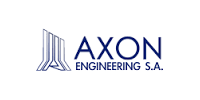Worldwide Synthetic Aperture Radar Industry to 2027 - Featuring Airbus, BAE Systems and General Atomics Among Others - ResearchAndMarkets.com
The "Synthetic Aperture Radar Market" report has been added to ResearchAndMarkets.com's offering.
The global synthetic aperture radar market reached a value of US$ 3.42 Billion in 2021. Looking forward, the publisher expects the market to reach a value of US$ 6.64 Billion by 2027 exhibiting a CAGR of 11.20% during 2022-2027.
Companies Mentioned
- Airbus SE
- Aselsan
- BAE Systems plc
- Cobham Limited
- General Atomics
- Israel Aerospace Industries
- L3Harris Technologies Inc.
- Leonardo S.p.A.
- Lockheed Martin Corporation
- Northrop Grumman Corporation
- Raytheon Technologies Corporation
- Saab AB
- Thales Group
Keeping in mind the uncertainties of COVID-19, we are continuously tracking and evaluating the direct as well as the indirect influence of the pandemic. These insights are included in the report as a major market contributor.
Synthetic aperture radar (SAR) is an imaging technique used to collect data and produce fine resolution images actively from a radar system. It transmits and receives back microwave signals from the surface of the Earth using active sensors. At present, it is utilized in various applications, ranging from studying icebergs and tracking the paths of oil spills into sensitive marshes to mapping the wetlands. It can also be used in unfavorable environmental conditions to detect changes in habitat, water levels and moisture, and analyze the effects of natural or human disturbances after earthquakes or sinkhole openings.
SAR is extensively utilized by scientists, geologists, and researchers to remotely map and study the reflectivity of different objects or environments with high spatial resolution through the emission and reception of electromagnetic (EM) signals. This, coupled with rising concerns about climatic changes, environmental degradation, and disaster monitoring, represents one of the key factors driving the use of SAR to assess changing ecological impacts. Apart from this, SAR technology is employed in the agriculture sector to identify differences in surface roughness and improve field plowing, soil tillage, and crop harvesting. Moreover, governing agencies of several countries are encouraging the adoption of modern agricultural practices, which is contributing to the market growth.
Furthermore, SAR instruments are gaining traction over conventional optical imaging technology and observation satellites as they can provide detailed information about the surfaces of the Earth. Besides this, due to rising geopolitical tensions and increasing security concerns, defense organizations across the globe are relying on SAR satellites for surveillance, reconnaissance, and precision targeting, which is impelling the market growth.
Key Questions Answered in this Report:
- How has the global synthetic aperture radar market performed so far and how will it perform in the coming years?
- What has been the impact of COVID-19 on the global synthetic aperture radar market?
- What are the key regional markets?
- What is the breakup of the market based on the component?
- What is the breakup of the market based on the mode?
- What is the breakup of the market based on the frequency band?
- What is the breakup of the market based on the platform?
- What is the breakup of the market based on the application?
- What are the various stages in the value chain of the industry?
- What are the key driving factors and challenges in the industry?
- What is the structure of the global synthetic aperture radar market and who are the key players?
- What is the degree of competition in the industry?
Key Topics Covered:
1 Preface
2 Scope and Methodology
3 Executive Summary
4 Introduction
4.1 Overview
4.2 Key Industry Trends
5 Global Synthetic Aperture Radar Market
5.1 Market Overview
5.2 Market Performance
5.3 Impact of COVID-19
5.4 Market Forecast
6 Market Breakup by Component
7 Market Breakup by Mode
8 Market Breakup by Frequency Band
9 Market Breakup by Platform
10 Market Breakup by Application
11 Market Breakup by Region
12 SWOT Analysis
13 Value Chain Analysis
14 Porters Five Forces Analysis
15 Price Analysis
16 Competitive Landscape
16.1 Market Structure
16.2 Key Players
16.3 Profiles of Key Players
For more information about this report visit https://www.researchandmarkets.com/r/6u1amf
View source version on businesswire.com: https://www.businesswire.com/news/home/20220302005856/en/




